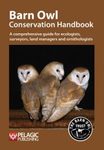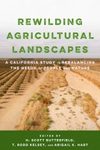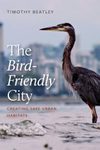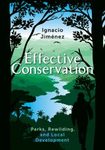About this book
Raptors are an unusual success story of wildness thriving in the heart of our cities – they have developed substantial populations around the world in recent decades. But there are deeper issues around how these birds make their urban homes. New research provides insight into the role of raptors as vital members of the urban ecosystem and future opportunities for protection, management, and environmental education.
A cutting-edge synthesis of over two decades of scientific research, Urban Raptors is the first book to offer a complete overview of urban ecosystems in the context of bird-of-prey ecology and conservation. This comprehensive volume examines urban environments, explains why some species adapt to urban areas but others do not, and introduces modern research tools to help in the study of urban raptors. It also delves into climate change adaptation, human-wildlife conflict, and the unique risks birds of prey face in urban areas before concluding with real-world wildlife management case studies and suggestions for future research and conservation efforts. The case studies are mostly based in the US, but there are a few international examples – specifically regarding owls in Australia and kites in Europe.
Boal and Dykstra have compiled the go-to single source of information on urban birds of prey. Among researchers, urban green space planners, wildlife management agencies, birders, and informed citizens alike, Urban Raptors will foster a greater understanding of birds of prey and an increased willingness to accommodate them as important members, not intruders, of our cities.
Contents
Preface
PART I: Raptors in Urban Ecosystems
Chapter 1. Urban Birds of Prey: A Lengthy History of Human–Raptor Cohabitation \ Keith L. Bildstein and Jean-François Therrien
Chapter 2. City Lifestyles: Behavioral Ecology of Urban Raptors \ Cheryl R. Dykstra
Chapter 3. Urban Raptor Communities: Why Some Raptors and Not Others Occupy Urban Environments \ Clint W. Boal
Chapter 4. Demography of Raptor Populations in Urban Environments \ R. William Mannan and Robert J. Steidl
Chapter 5. Urbanization and Raptors: Trends and Research Approaches \ Raylene Cooke, Fiona Hogan, Bronwyn Isaac, Marian Weaving, and John G. White
PART II: Urban Raptors
Chapter 6. Mississippi Kites: Elegance Aloft \ Ben R. Skipper
Chapter 7. Cooper’s Hawk: The Bold Backyard Hunter \ Robert N. Rosenfield, R. William Mannan, and Brian A. Millsap
Chapter 8. Red-shouldered Hawk: Adaptable Denizen of the Suburbs \ Cheryl R. Dykstra, Peter H. Bloom, and Michael D. McCrary
Chapter 9. Harris’s Hawks: All in the Family \ Clint W. Boal and James F. Dwyer
Chapter 10. Barred Owls: A Nocturnal Generalist Thrives in Wooded, Suburban Habitats \ Richard O. Bierregaard
Chapter 11. Powerful Owls: Possum Assassins Move into Town \ Raylene Cooke, Fiona Hogan, Bronwyn Isaac, Marian Weaving, and John G. White
Chapter 12. Burrowing Owls: Happy Urbanite or Disgruntled Tenant? \ Courtney J. Conway
Chapter 13. Peregrine Falcon: The Neighbors Upstairs \ Joel E. Pagel, Clifford M. Anderson, Douglas A. Bell, Edward Deal, Lloyd Kiff, F. Arthur McMorris, Patrick T. Redig, and Robert Sallinger
PART III: Conservation and Management
Chapter 14. Raptor Mortality in Urban Landscapes \ James F. Dwyer, Sofi Hindmarch, and Gail E. Kratz
Chapter 15. Raptor–Human Conflicts in Urban Settings \ Brian E. Washburn
Chapter 16. Raptors: Victims and Ambassadors—Raptor Rehabilitation, Education, and Outreach \ Lori R. Arent, Michelle Willette, and Gail Buhl
Chapter 17. Urban Raptor Case Studies: Lessons from Texas \ John M. Davis
Chapter 18. Management and Conservation of Urban Raptors \ David M. Bird, Robert N. Rosenfield, Greg Septon, Marcel A. Gahbauer, John H. Barclay, and Jeffrey L. Lincer
Chapter 19. Perspectives and Future Directions \ Stephen DeStefano and Clint W. Boal
Contributors
Index
Customer Reviews




































